How Wide Should Drapery Panels Be for Perfect Coverage?
When designing a room, the details often make all the difference—and drapery panels are no exception. One common question we hear is, "How wide should drapery panels be for perfect coverage?" Achieving the ideal width not only enhances your windows’ functionality but also elevates the aesthetics of your space.
What Is the Ideal Width for Drapery Panels?
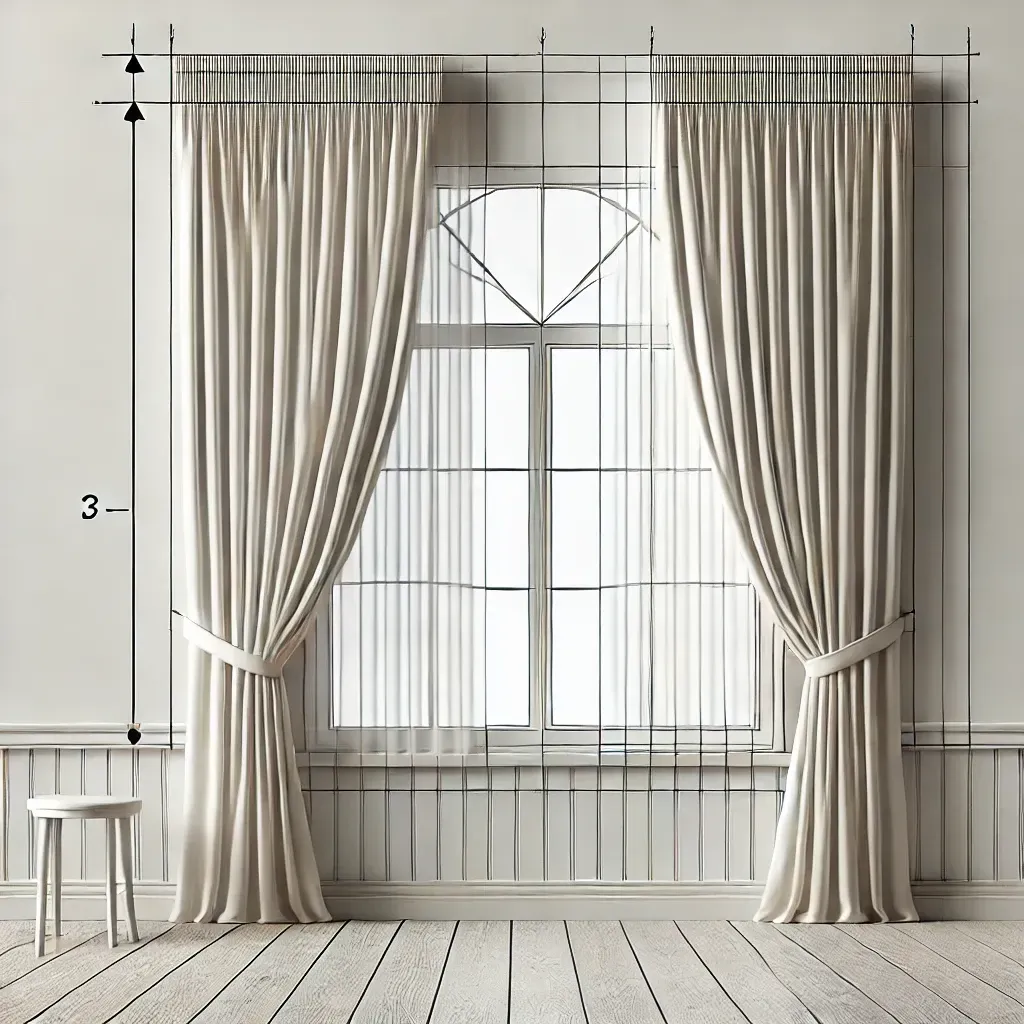
The width of your drapery panels is crucial for ensuring proper window coverage and an elegant drape. As a general rule of thumb, the combined width of your drapery panels should be two to three times the width of your window for optimal fullness. This provides adequate coverage and allows the fabric to gather naturally for a polished look. For example, if your window is 60 inches wide, your total panel width should range from 120 to 180 inches.
Drapery Panel Width Guide for Perfect Coverage
1. Measure Your Windows Accurately
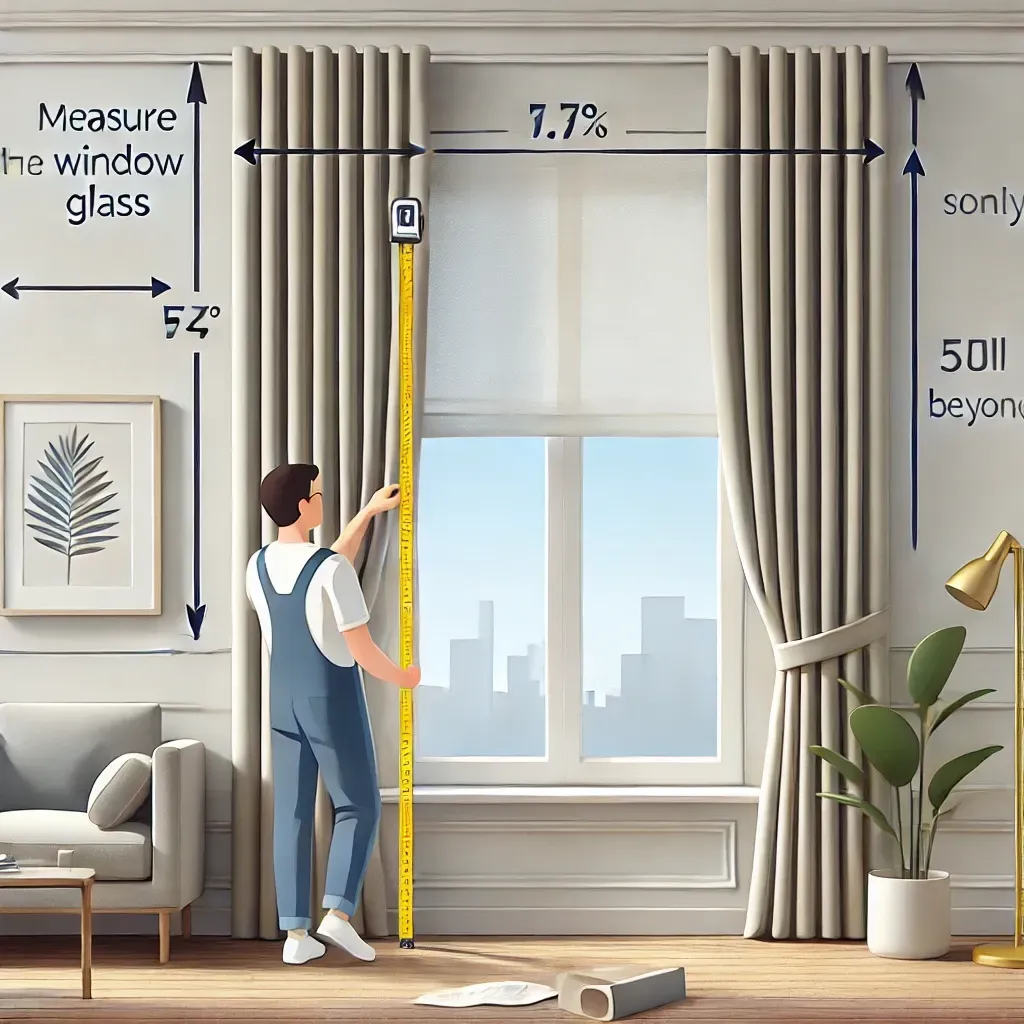
The first step in determining the right panel width is accurate measurement. Use a tape measure to record the width of your window, including the frame. For windows with trim, measure from one edge of the trim to the other. If you’re unsure about how much coverage you need, consider whether you want your panels to:
- Cover only the window glass.
- Extend slightly beyond the frame for better light blocking.
- Completely cover the surrounding wall for a dramatic effect.
2. Factor in Curtain Rod Length
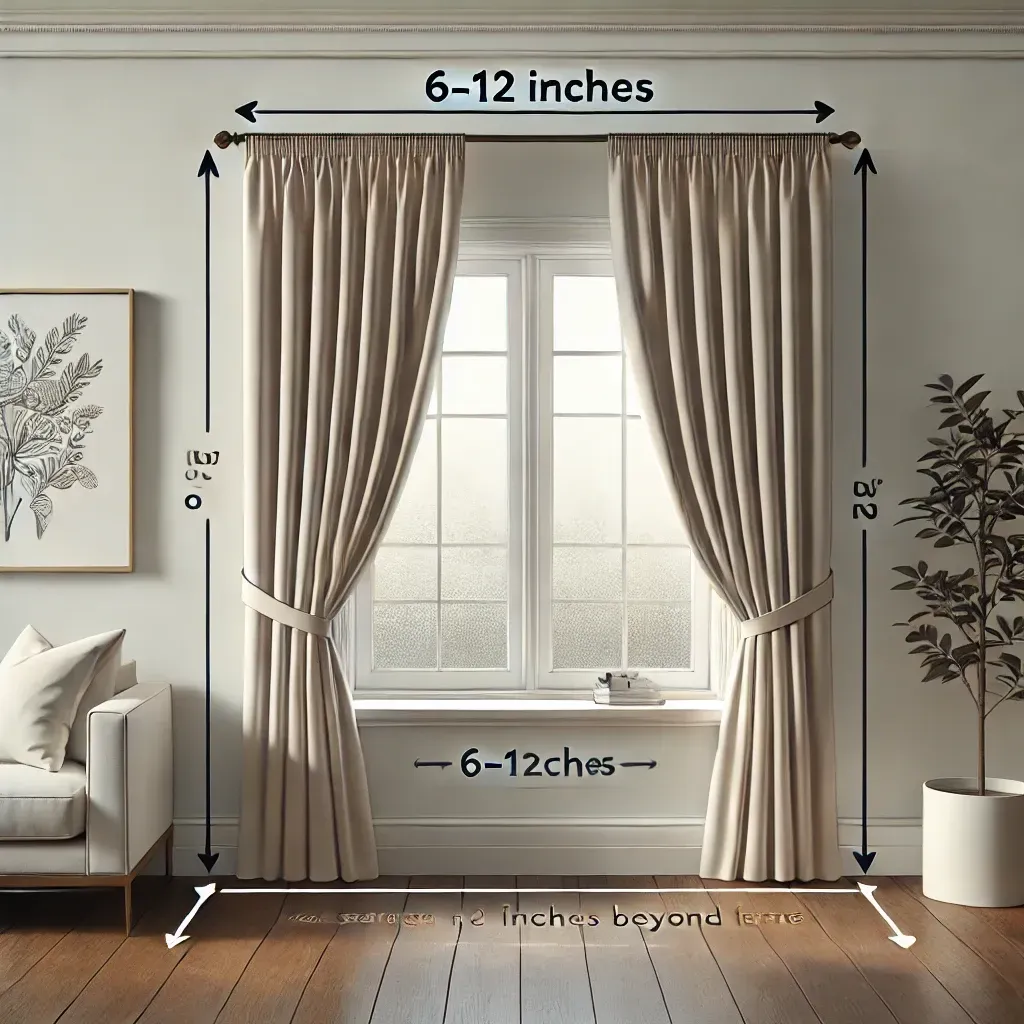
The length of your curtain rod also plays a vital role. For a balanced look, your rod should extend at least 6–12 inches beyond the window on either side. This ensures your drapery panels can stack neatly without obstructing the view or natural light. Choose panels wide enough to cover this additional space when closed.
Tips to Measure Drapery Panels for Optimal Coverage
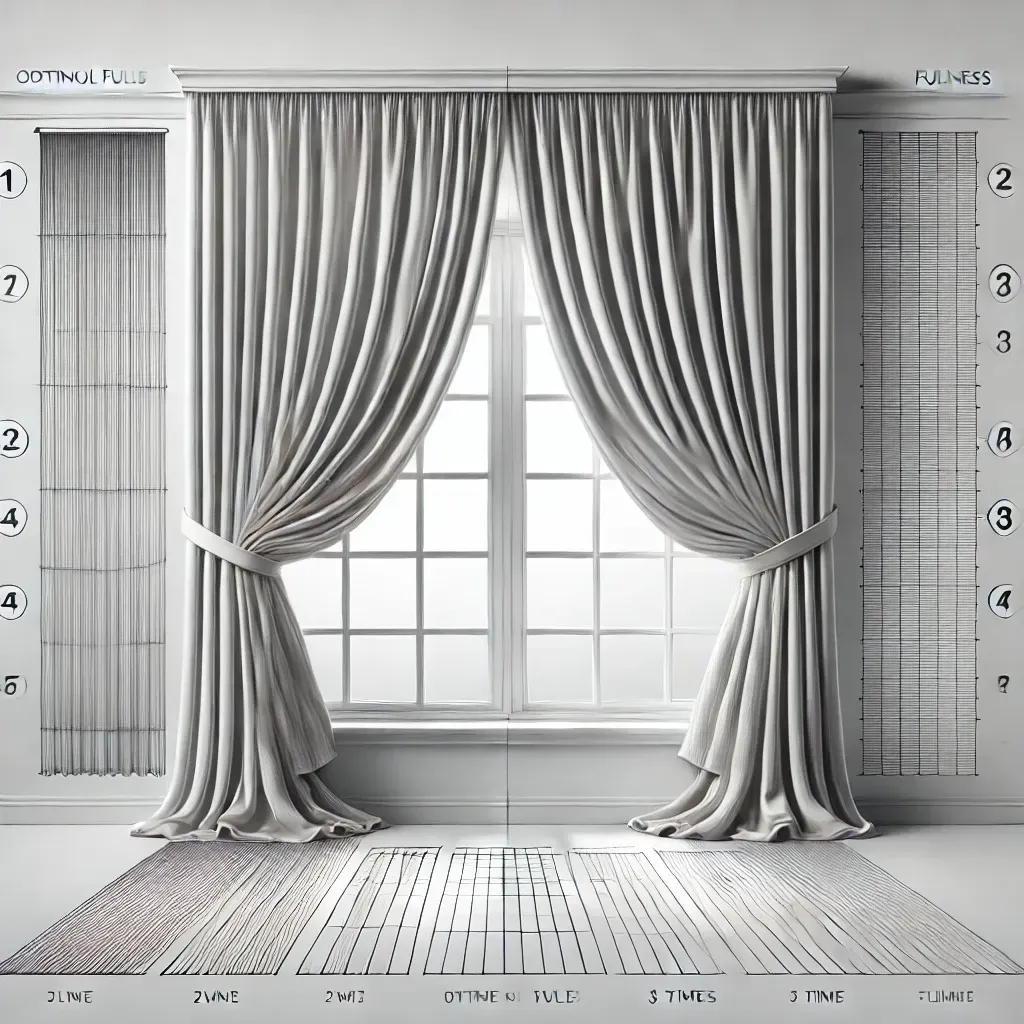
When calculating drapery panel width, think about the following:
- Fullness: A fuller drape looks luxurious and ensures no gaps when the curtains are closed. Panels that are twice the width of the window provide a light, airy look, while panels three times the width add a dramatic, rich effect.
- Overlap: To block out light effectively, consider overlap where the panels meet in the middle. An additional 2–3 inches of fabric is usually sufficient.
- Style Preferences: Sheer curtains often look better with less fullness (1.5–2 times the window width), while heavy blackout curtains require more fabric for full coverage.
How Wide Should Drapery Panels Be for Large Windows?

Large or wide windows require special attention. In such cases, you may need custom drapery panels or multiple panels on a single rod. For example:
- Bay Windows: Measure each section of the window individually and add up the widths to calculate the total panel width required.
- Sliding Glass Doors: Panels should overlap slightly in the middle and extend beyond the doorframe to allow for smooth operation.
- Floor-to-Ceiling Windows: Use extra-wide panels to create a seamless, dramatic look.
Proper Drapery Panel Sizing: A Complete Guide
Understanding Standard Panel Widths
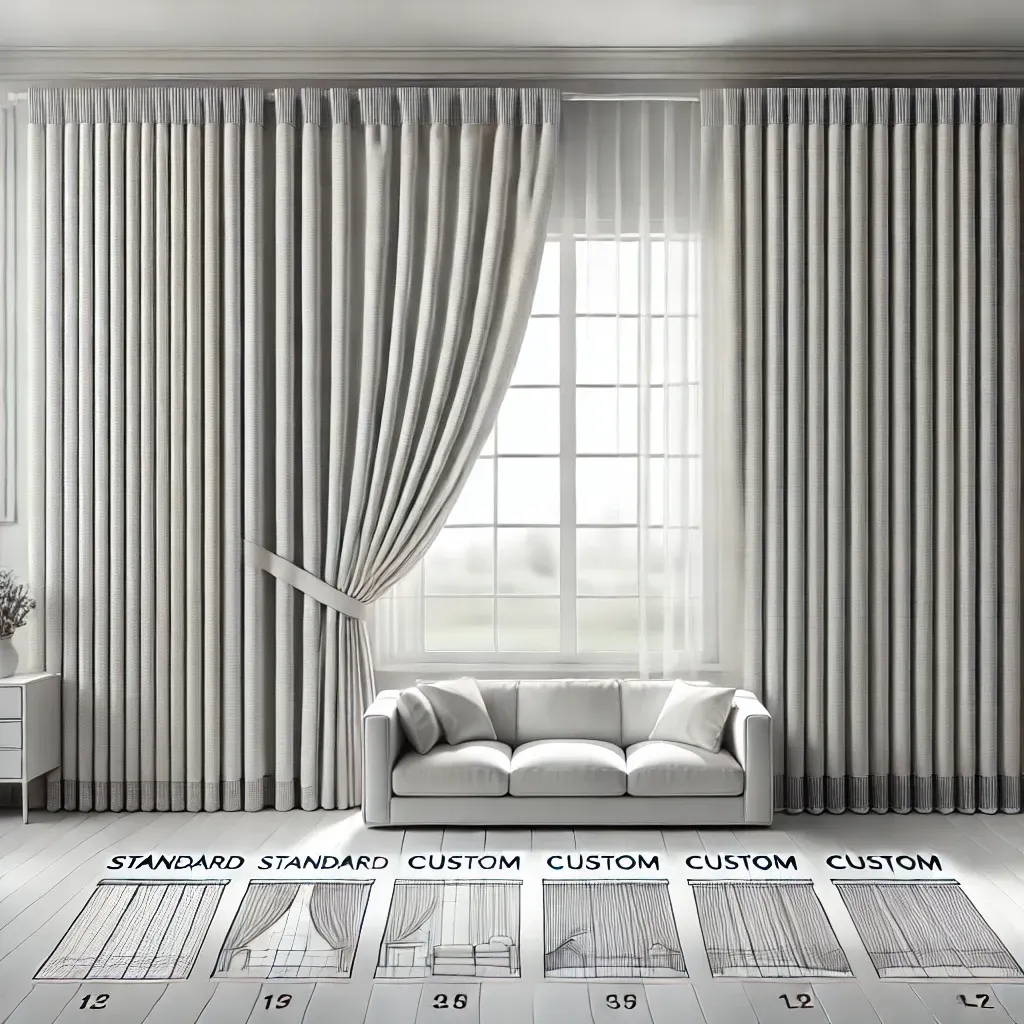
Most ready-made panels come in standard widths of 48, 54, or 60 inches. While these sizes are convenient, they may not always provide the perfect fit for your windows. For a tailored look, custom drapery panels allow you to select the exact dimensions needed.
Determining Panel Width for Pleated Drapes

Pleated drapes require special considerations because the fabric gathers tightly at the top. When measuring, ensure the fabric width accounts for both the pleats and the desired fullness.
Ensuring Full Window Coverage with the Right Drapery Panel Width
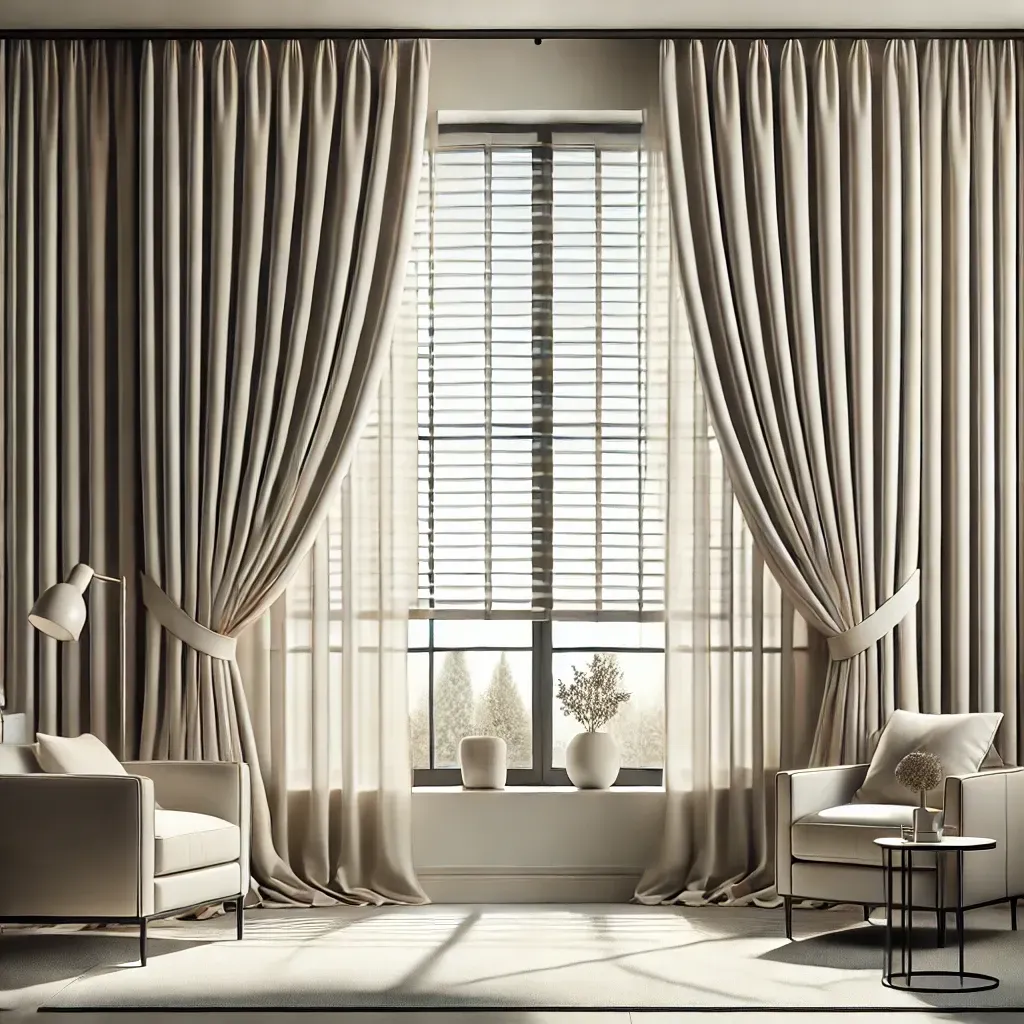
For those aiming for complete window coverage, it’s essential to account for stacking width—the extra fabric needed when panels are drawn open. This ensures the panels don’t block too much light or view. Typically, an additional 10–15% of the window width is a good starting point for stacking allowances.
Tailored Drapery Panels for a Custom Fit
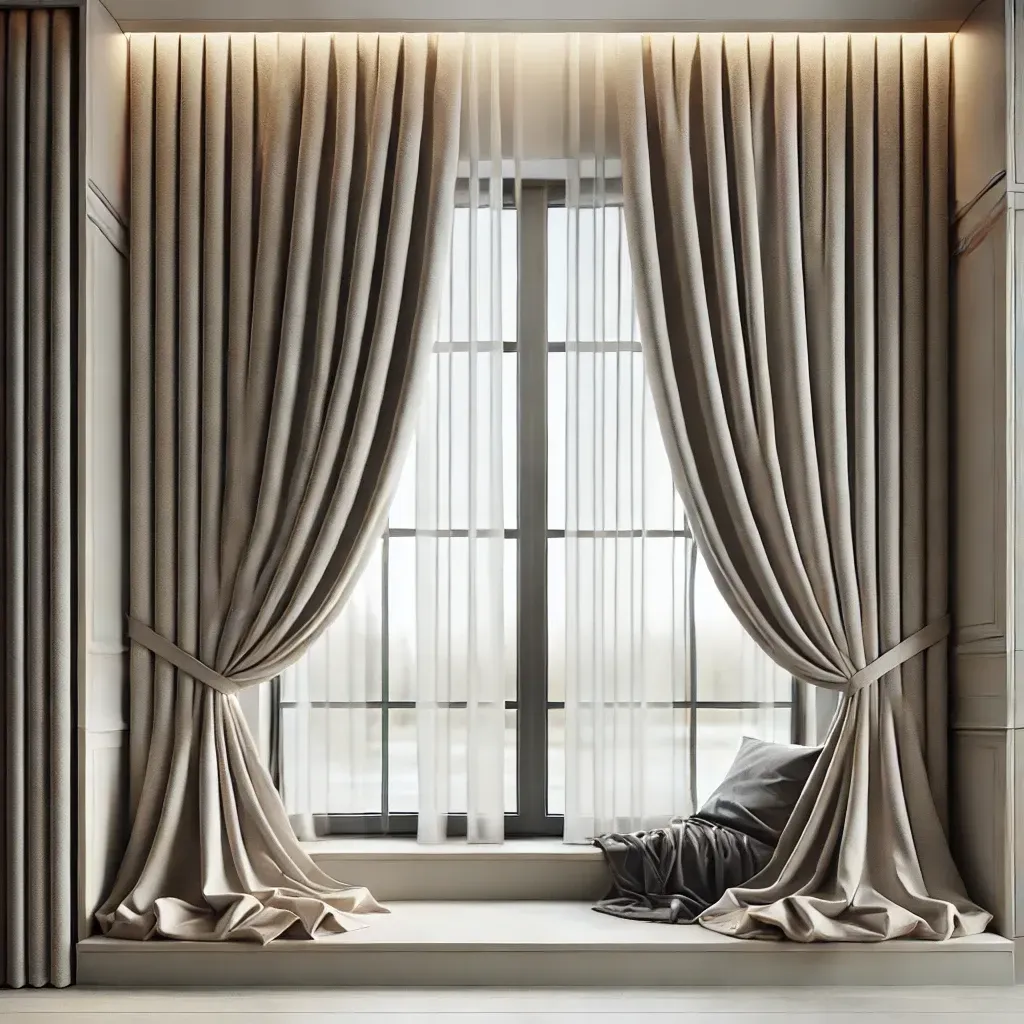
Tailored drapery panels are an excellent choice if your windows are non-standard sizes or you’re looking for a truly bespoke appearance. Custom panels allow you to select the perfect width, ensuring they complement your room’s style while providing full functionality.
Common Mistakes to Avoid When Measuring Drapery Panels
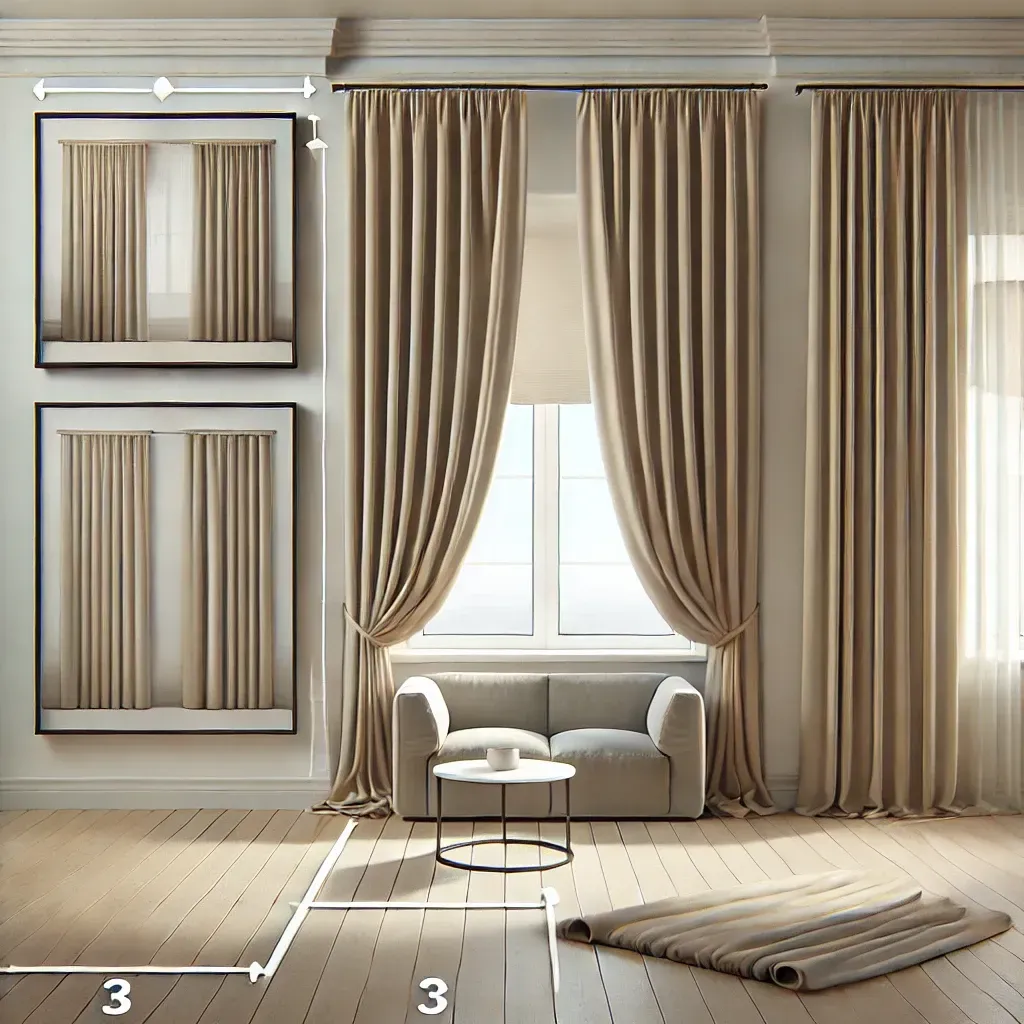
Even with careful planning, mistakes can happen. Avoid these common pitfalls:
- Underestimating Fullness: Skimping on fabric leads to flat, lifeless drapes. Always opt for more fabric than you think you’ll need.
- Neglecting Overlap: Forgetting to account for overlap results in unsightly gaps where light can seep through.
- Incorrect Rod Placement: Hanging the rod too close to the window limits how far the panels can stack back.
Best Practices for Choosing Drapery Panel Width

- Consult a Professional: Window treatment specialists can help you calculate the perfect dimensions for your space.
- Use High-Quality Materials: Investing in durable, beautiful fabric ensures your panels maintain their shape and functionality over time.
- Test Before You Buy: If possible, use fabric swatches or mock panels to visualize how the finished drapes will look.
Conclusion
Choosing the right width for your drapery panels is essential for achieving perfect coverage and a cohesive design. By understanding the factors involved—such as window size, curtain rod length, and fullness—you can create a stunning, functional window treatment that enhances your space.

